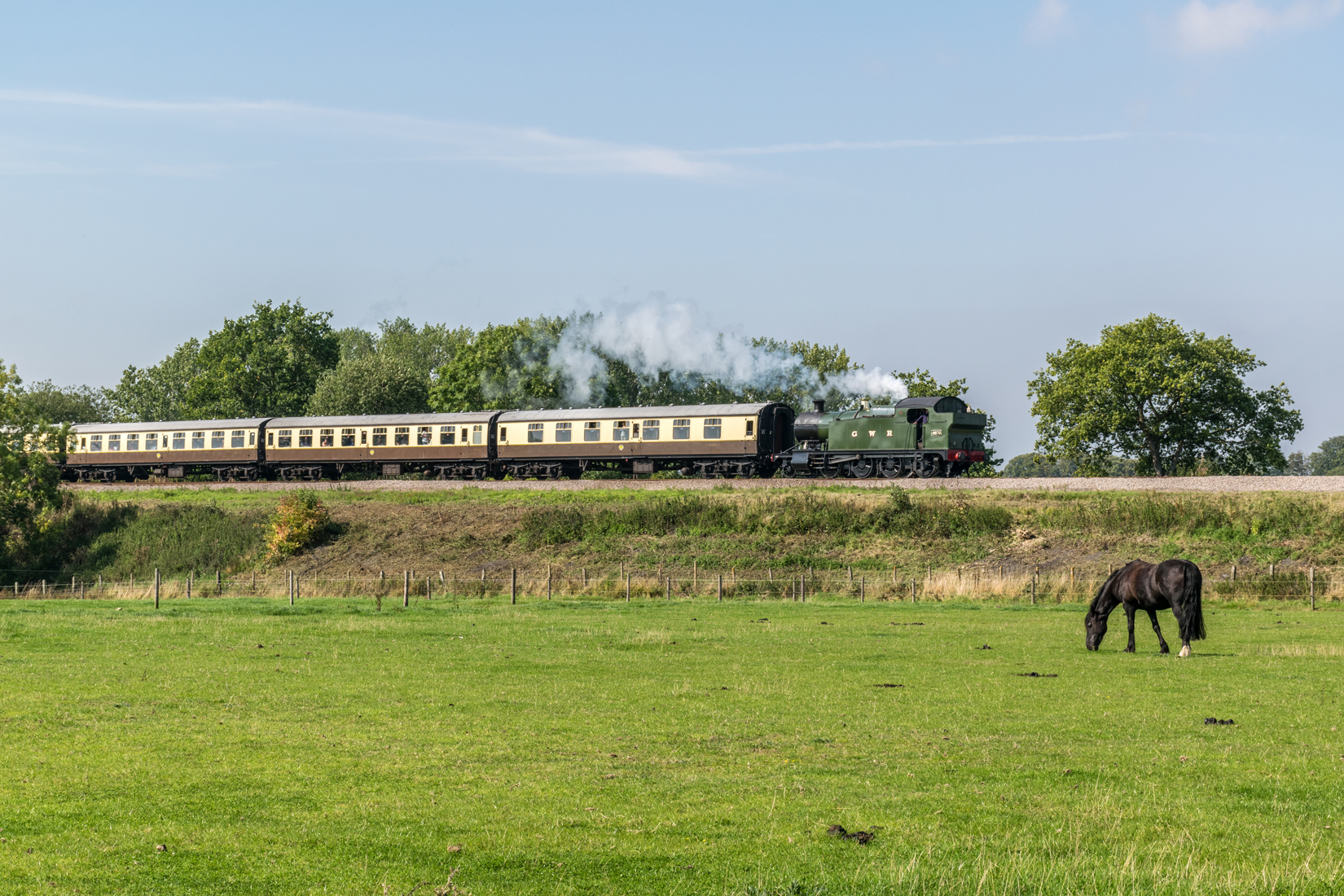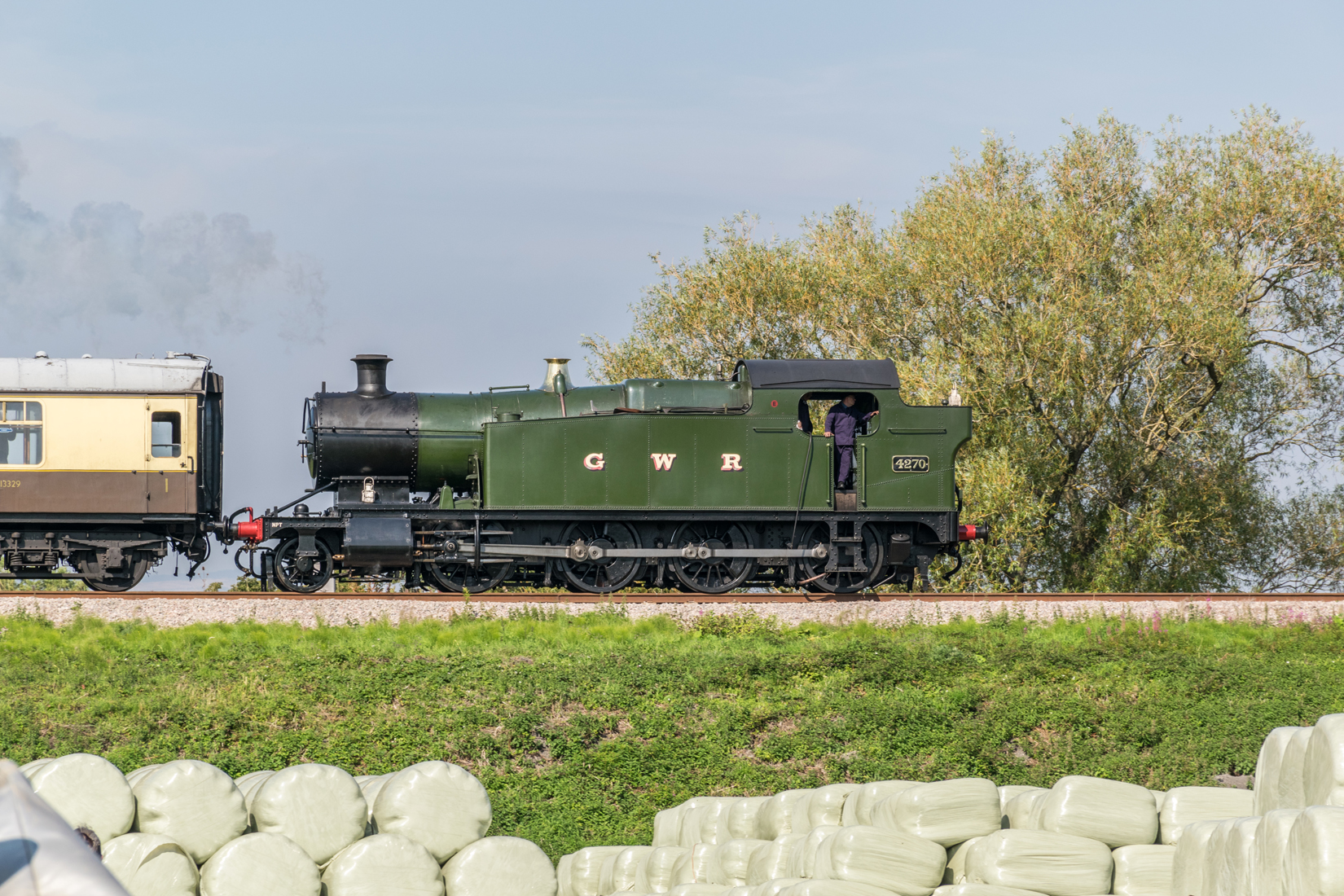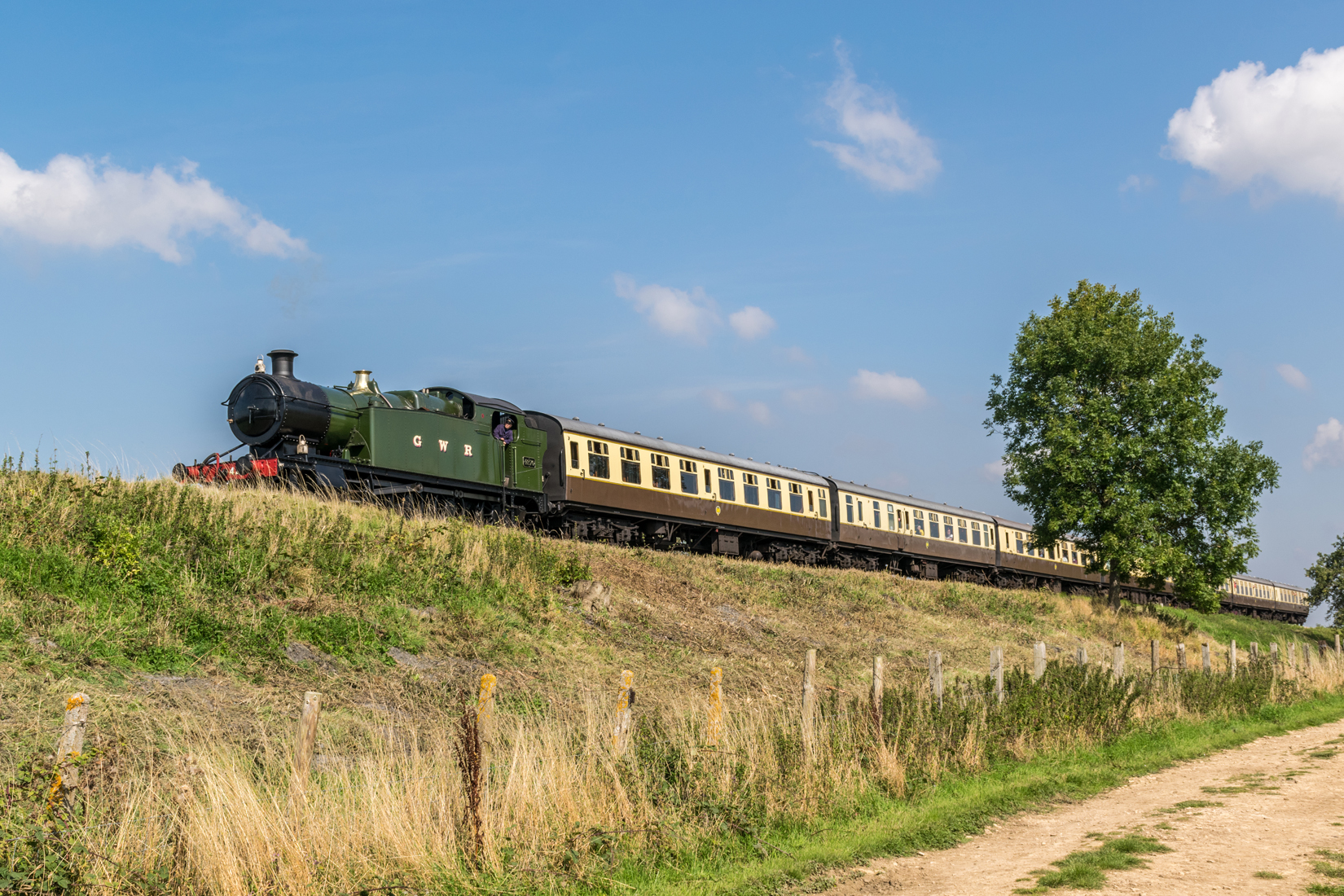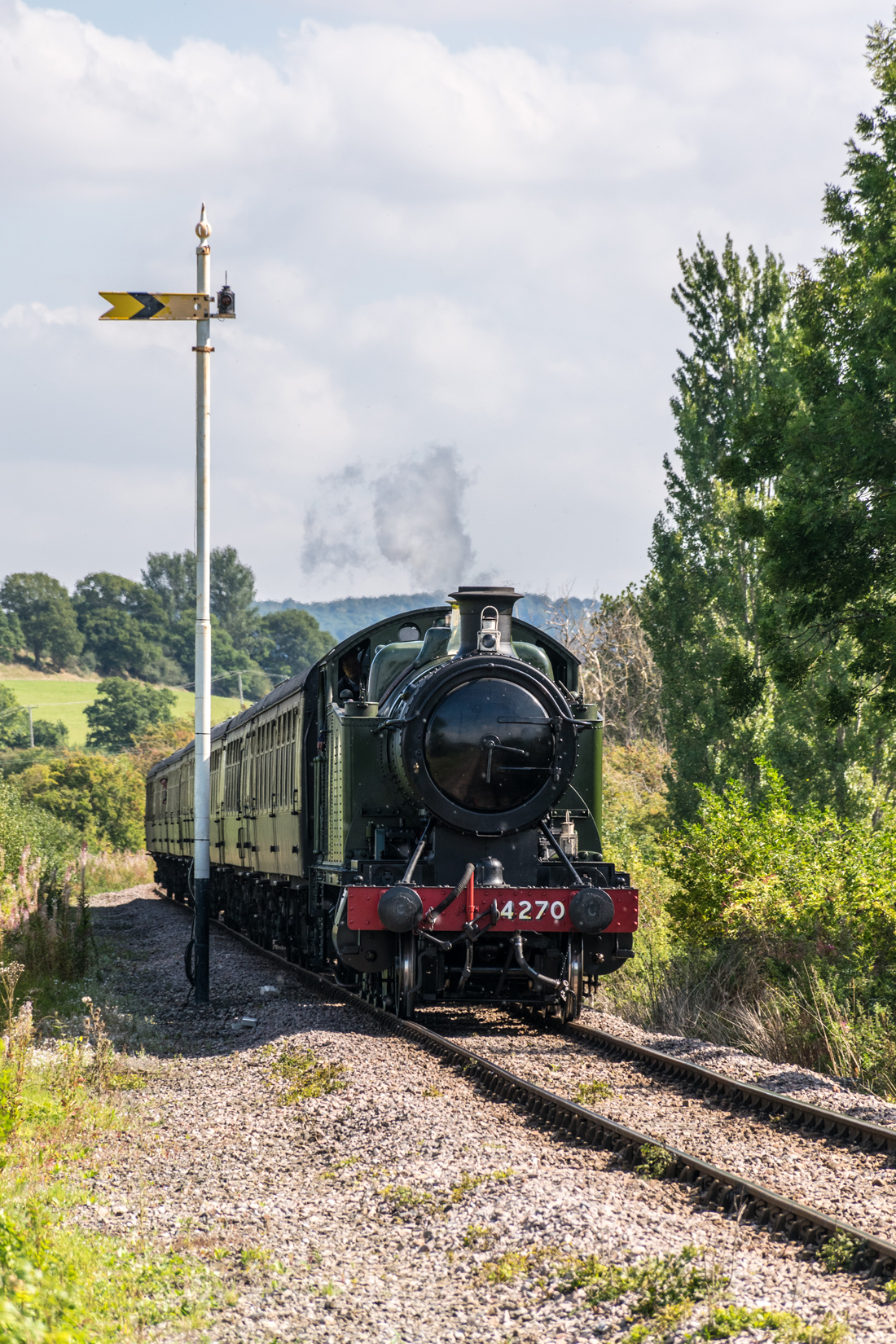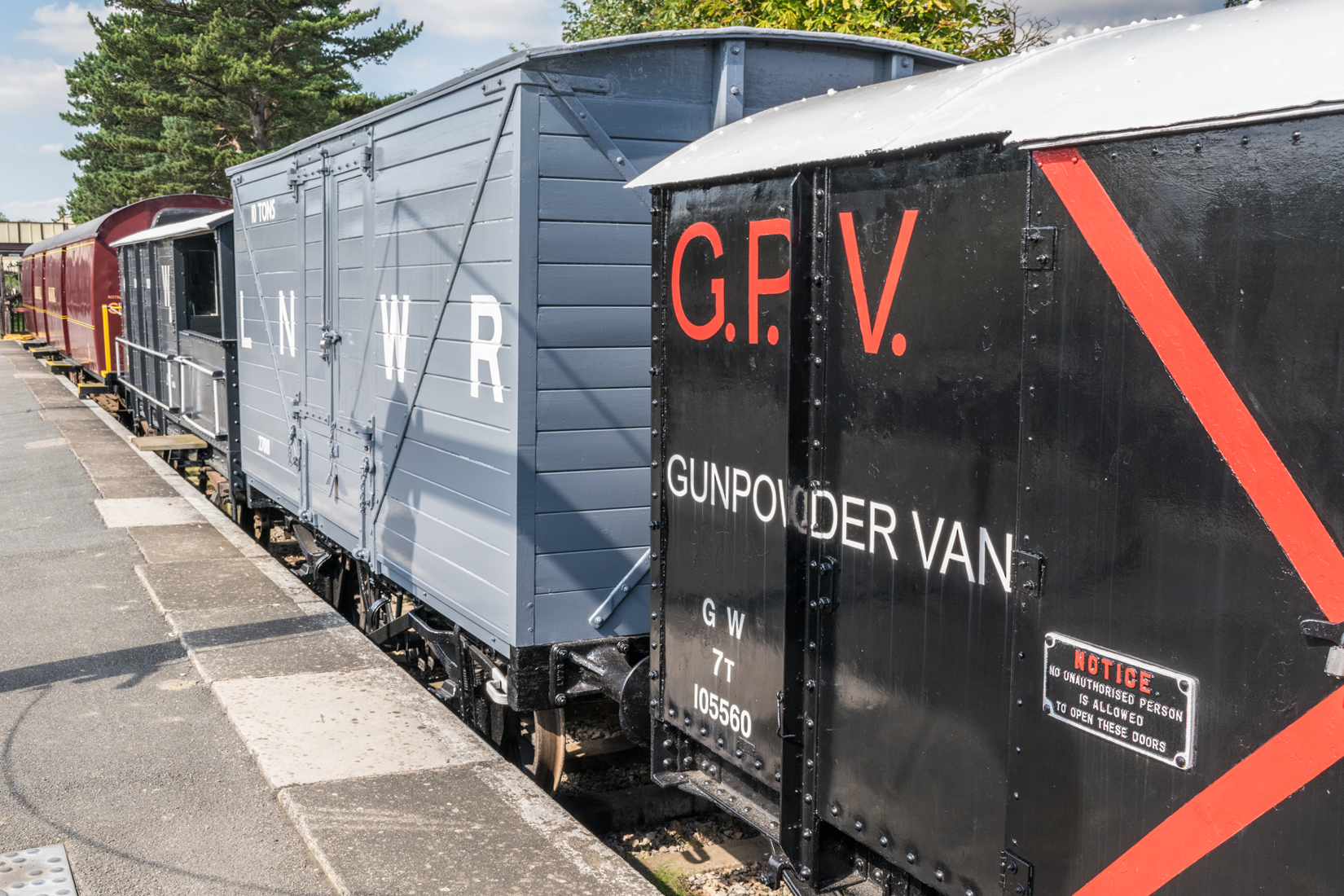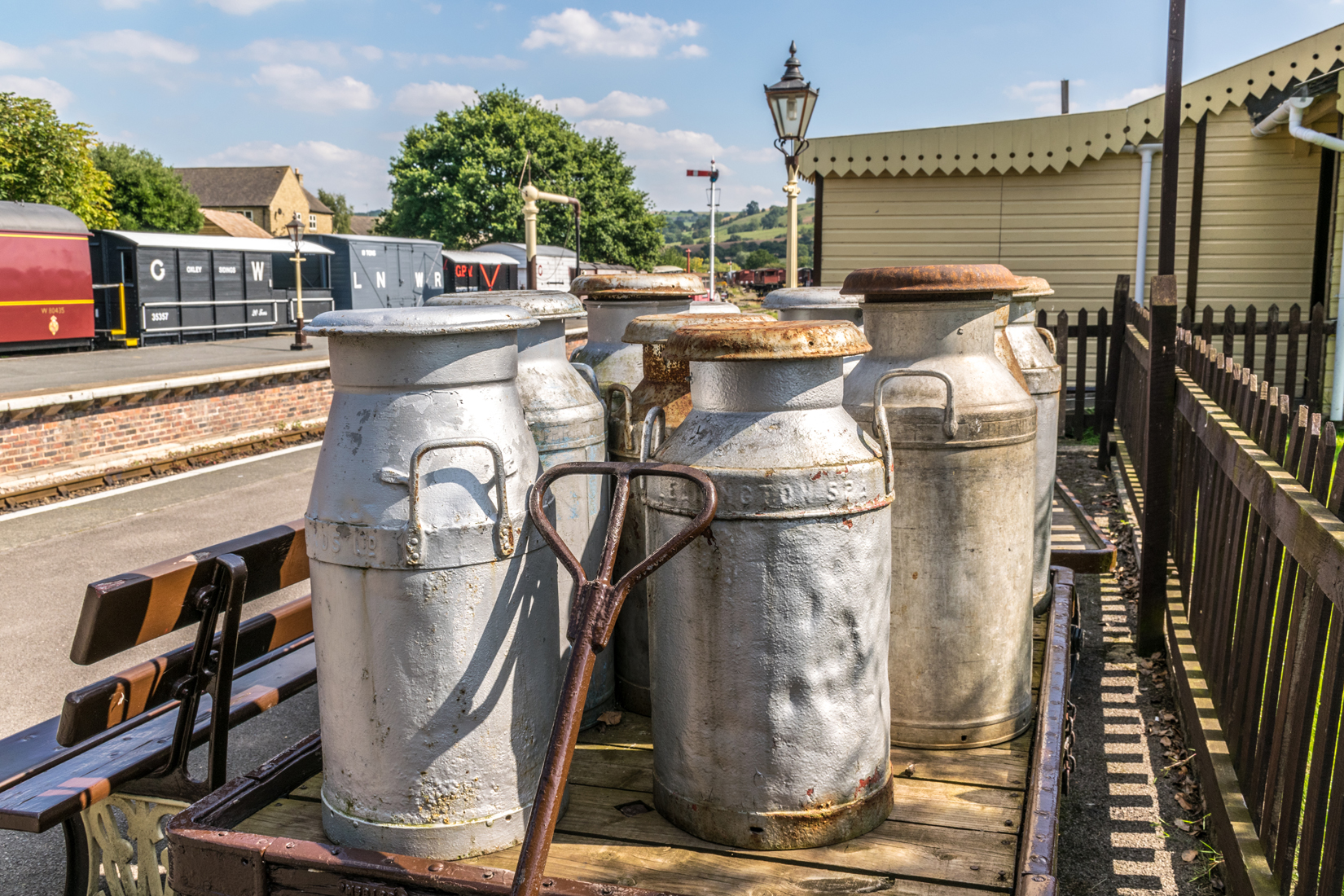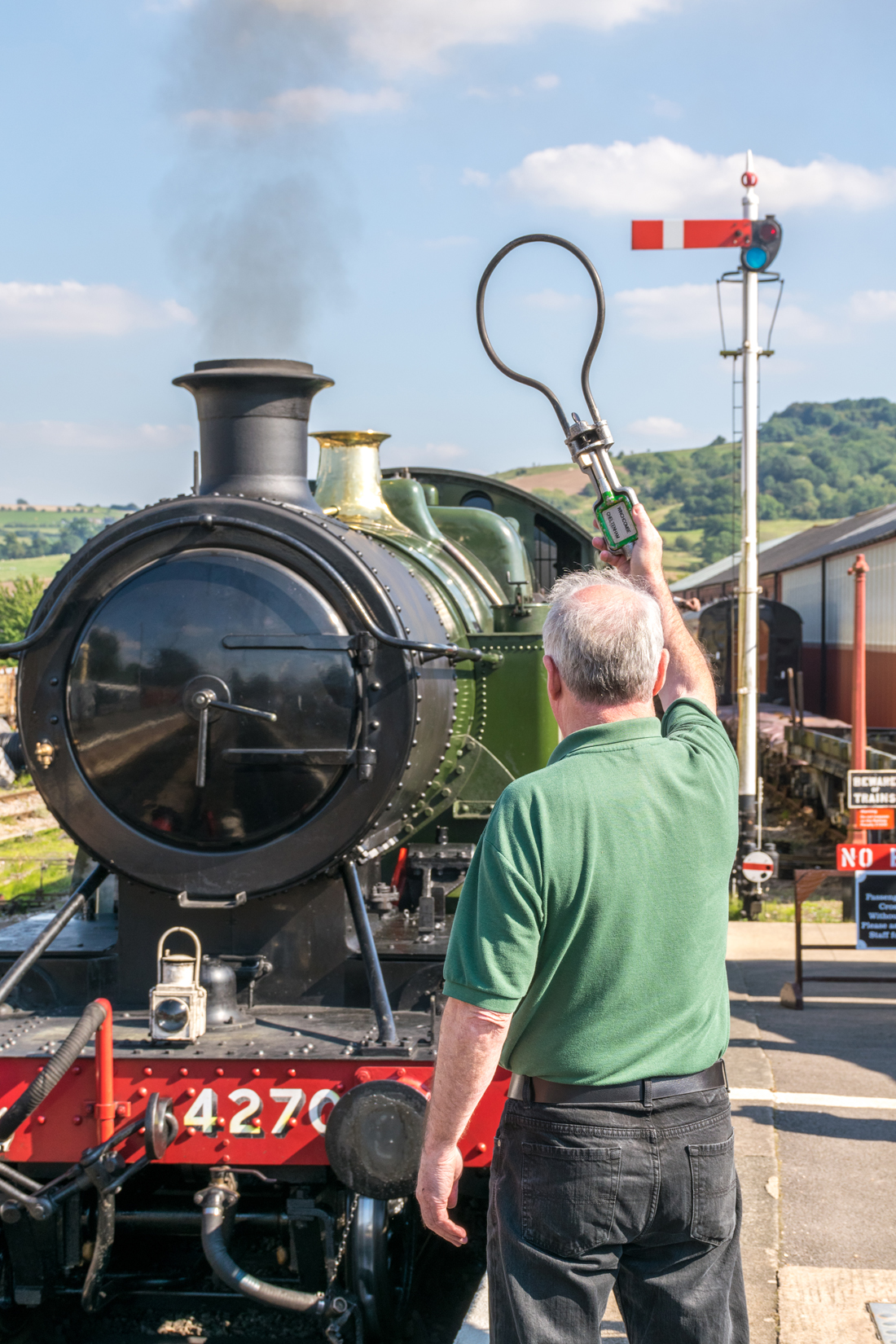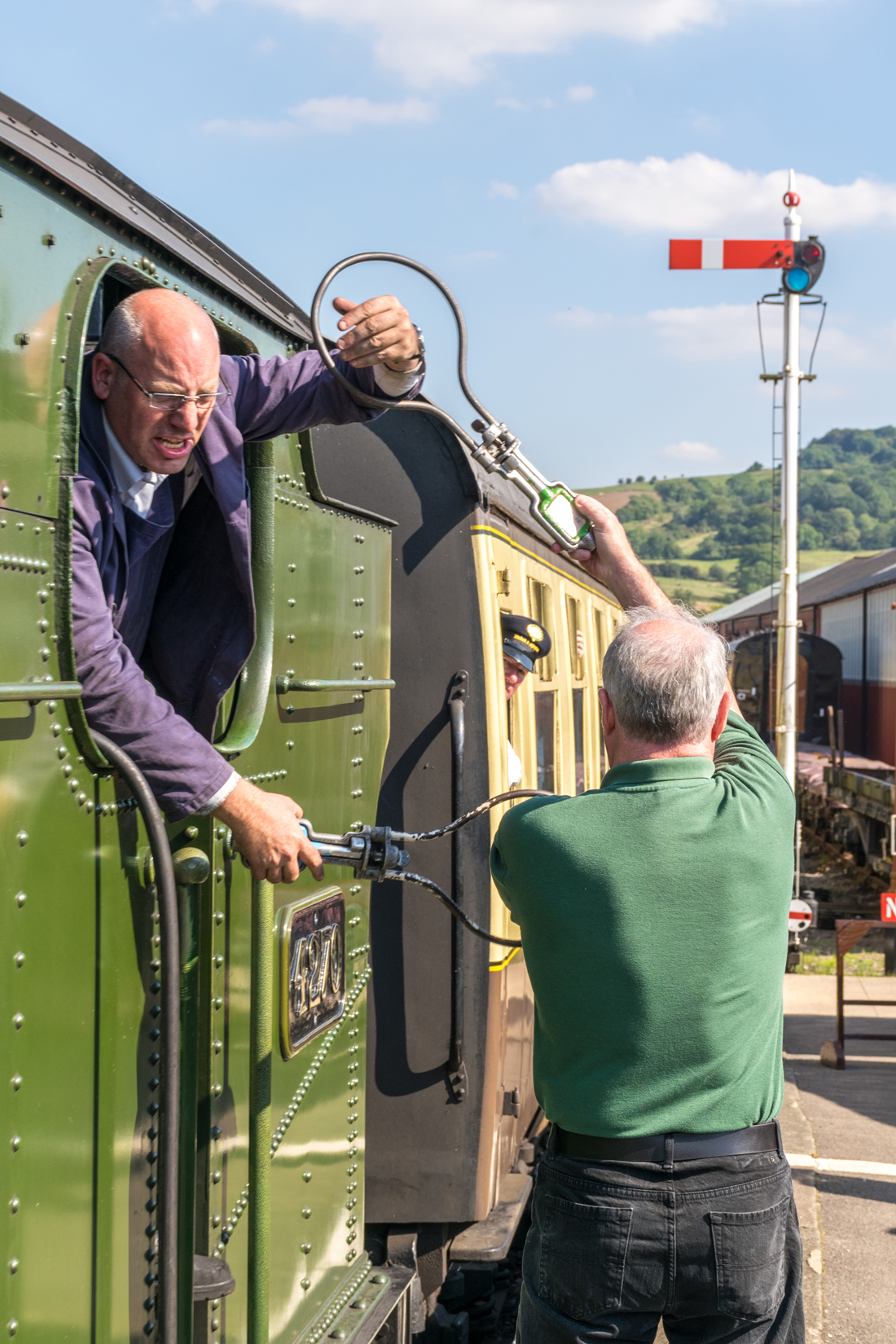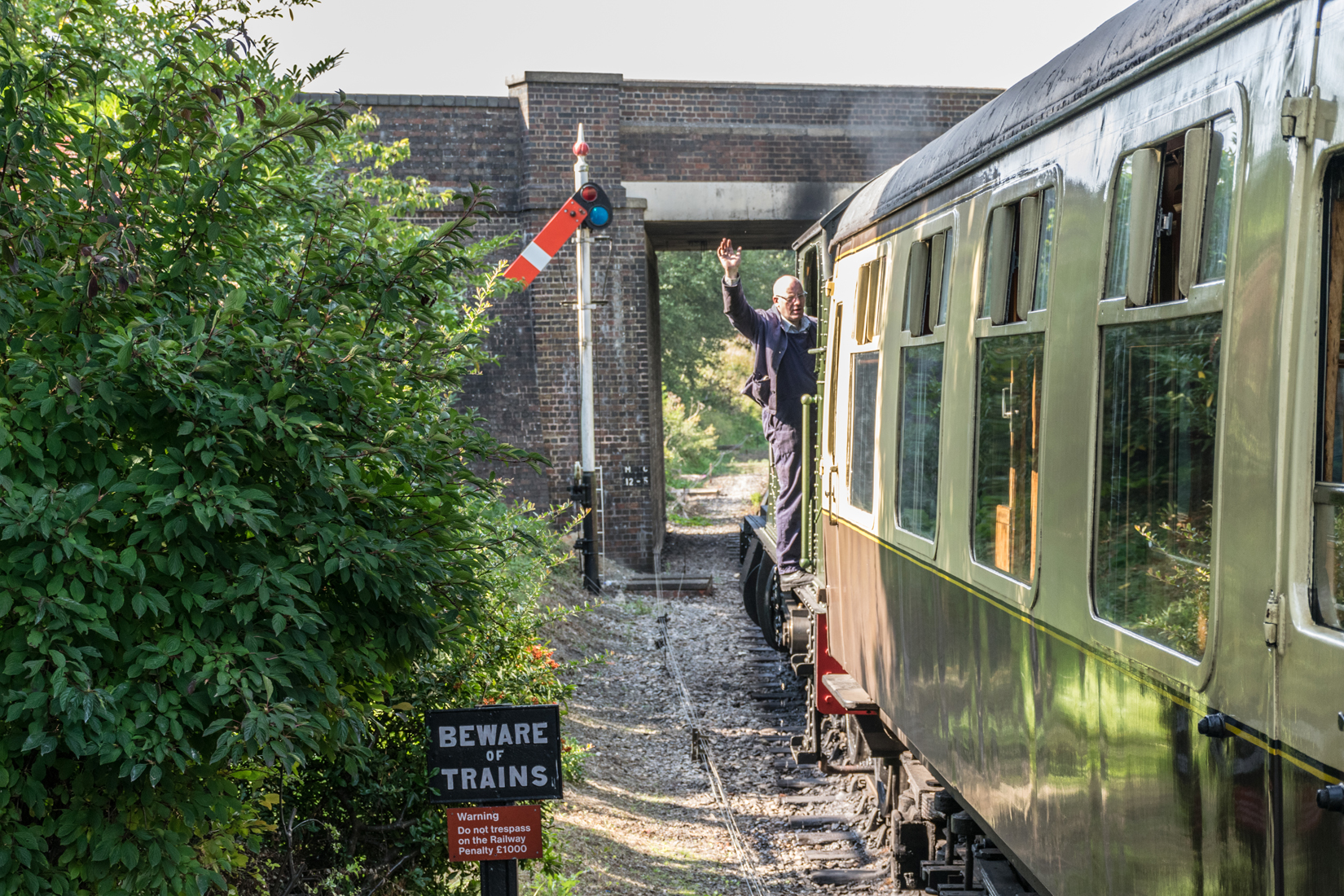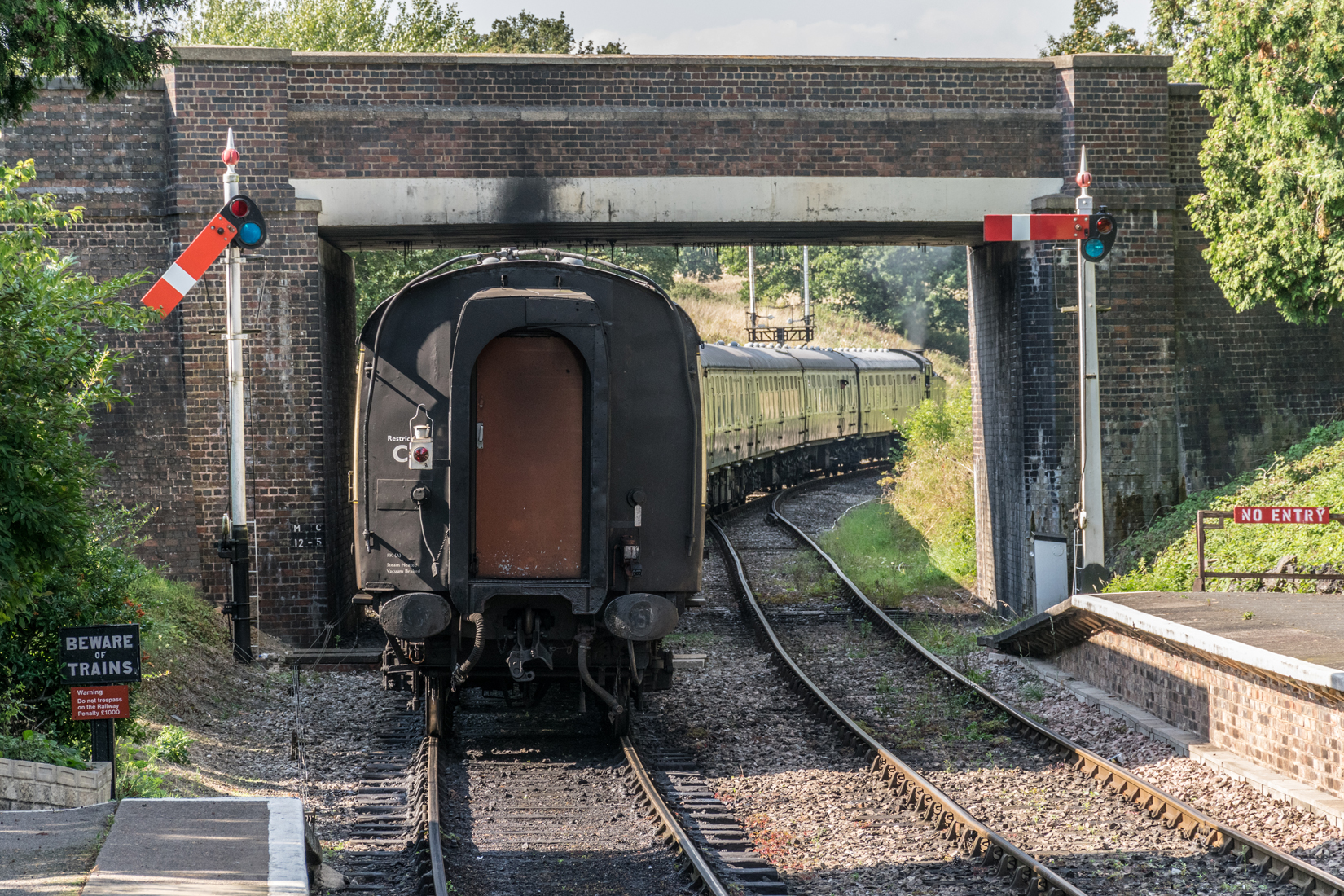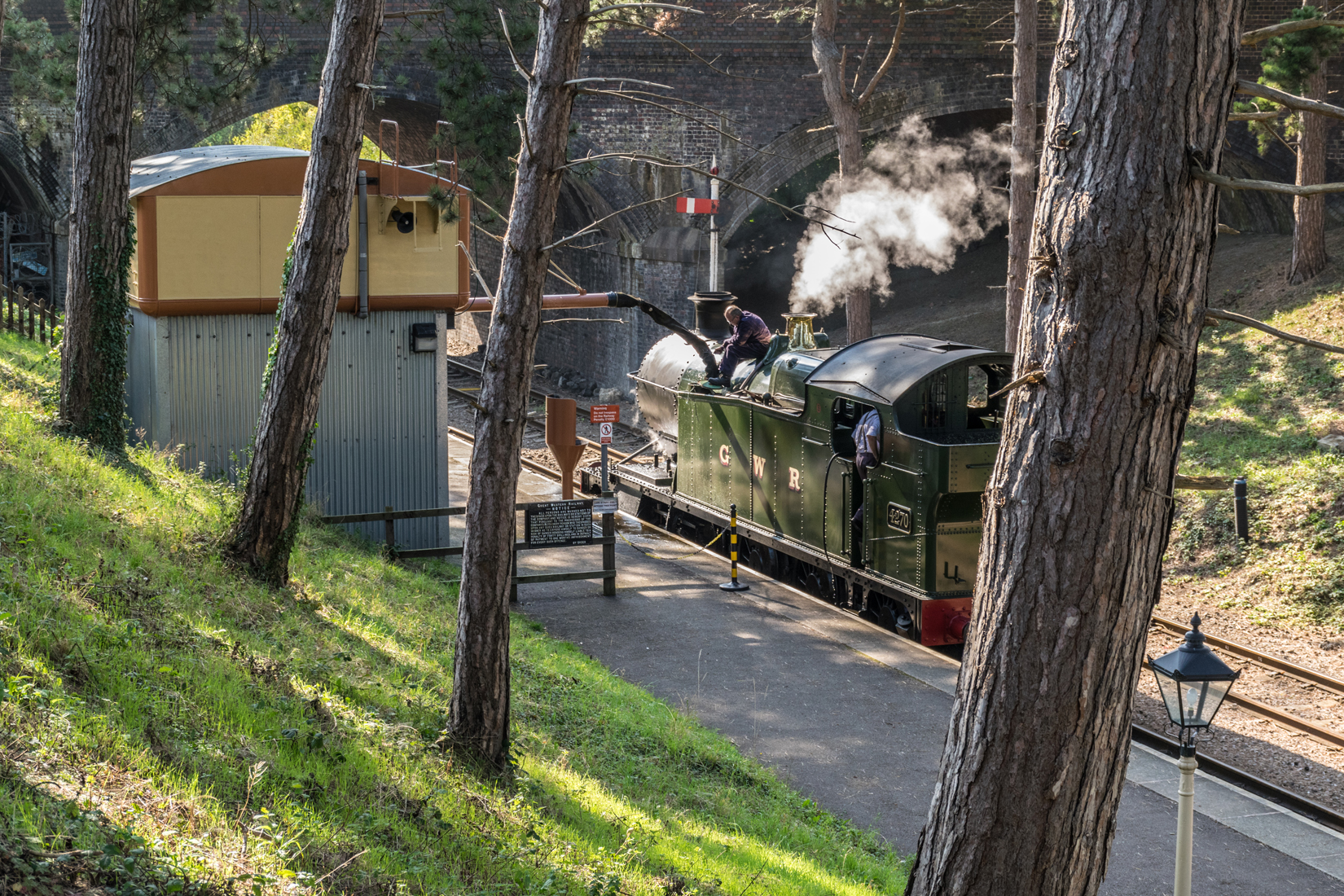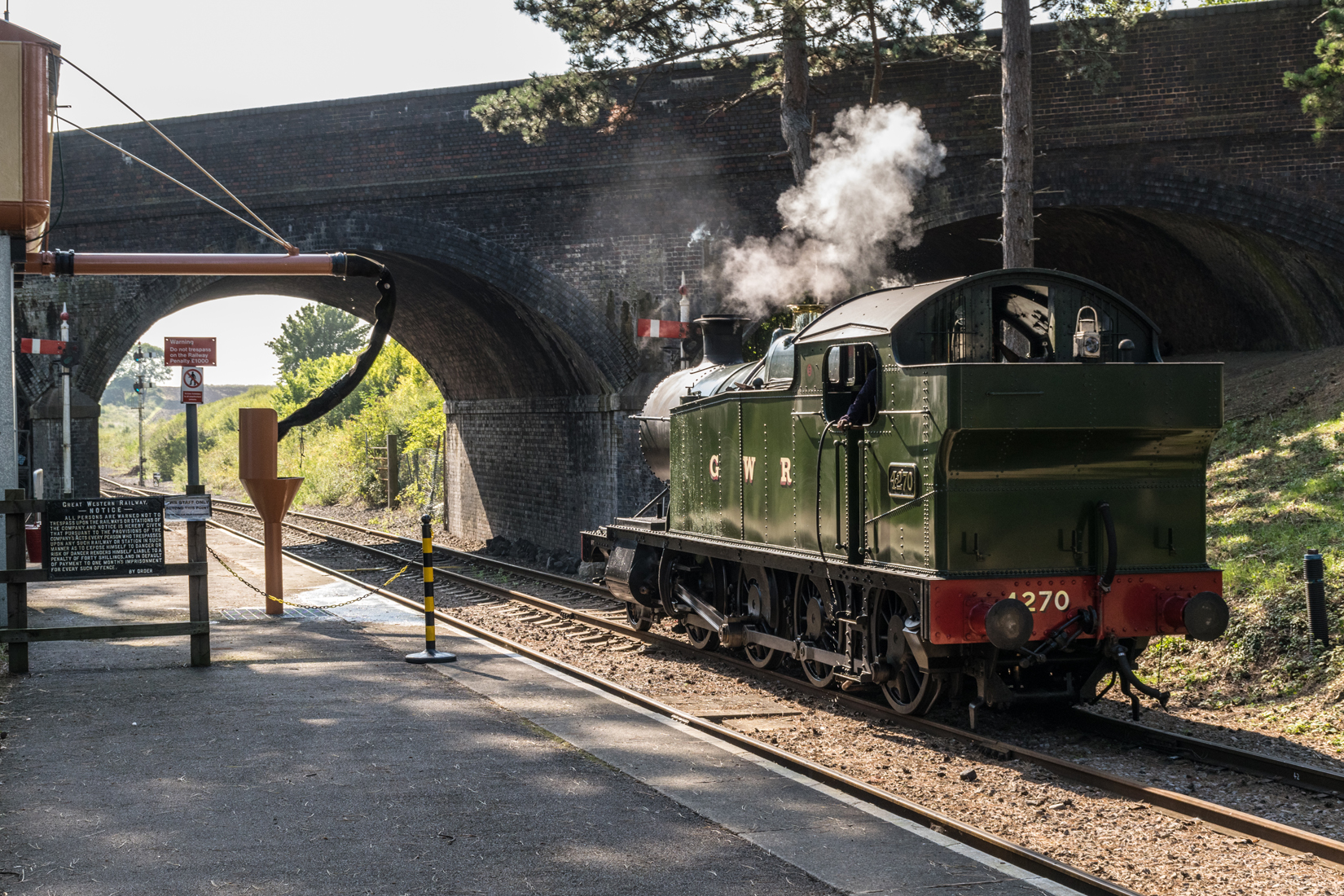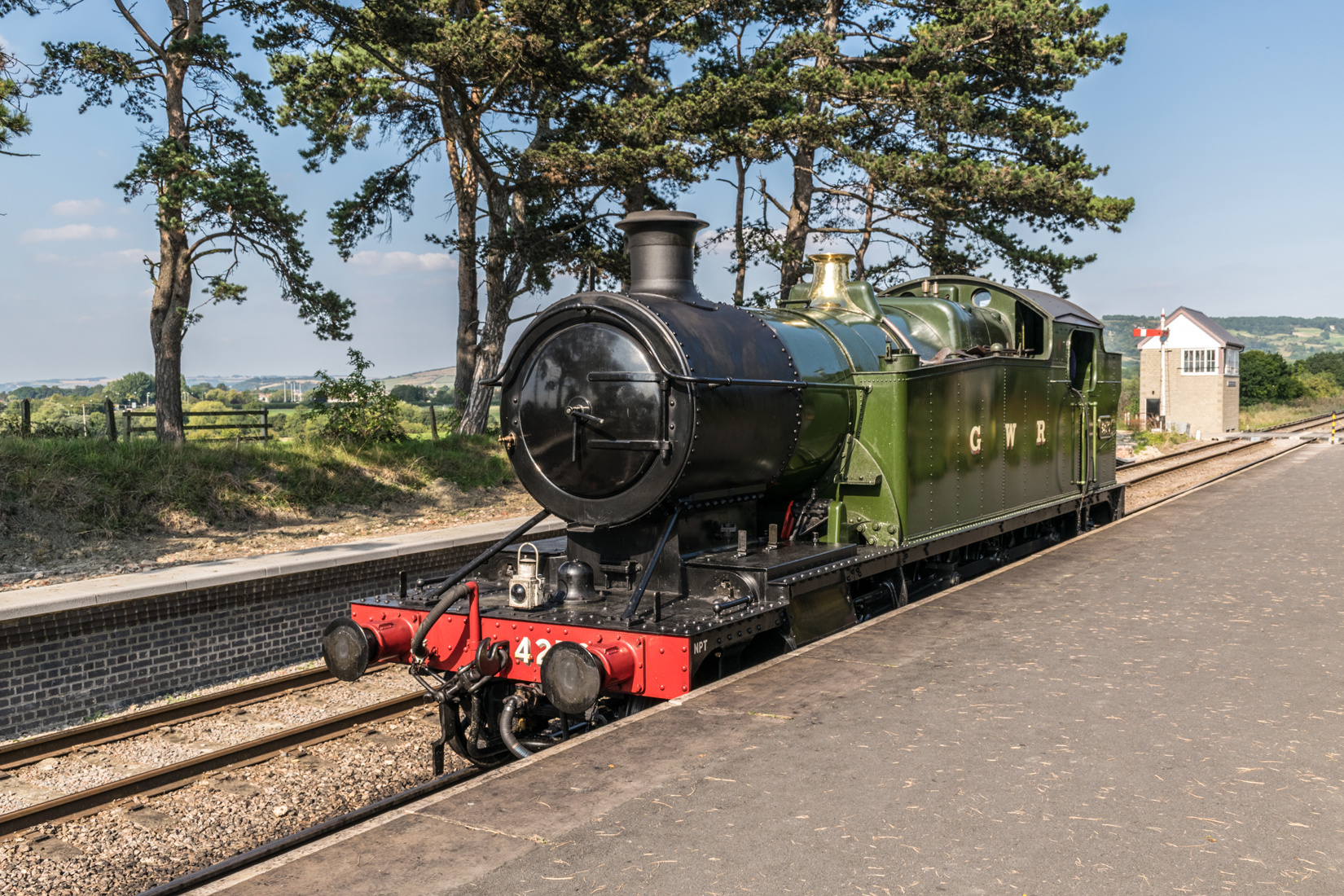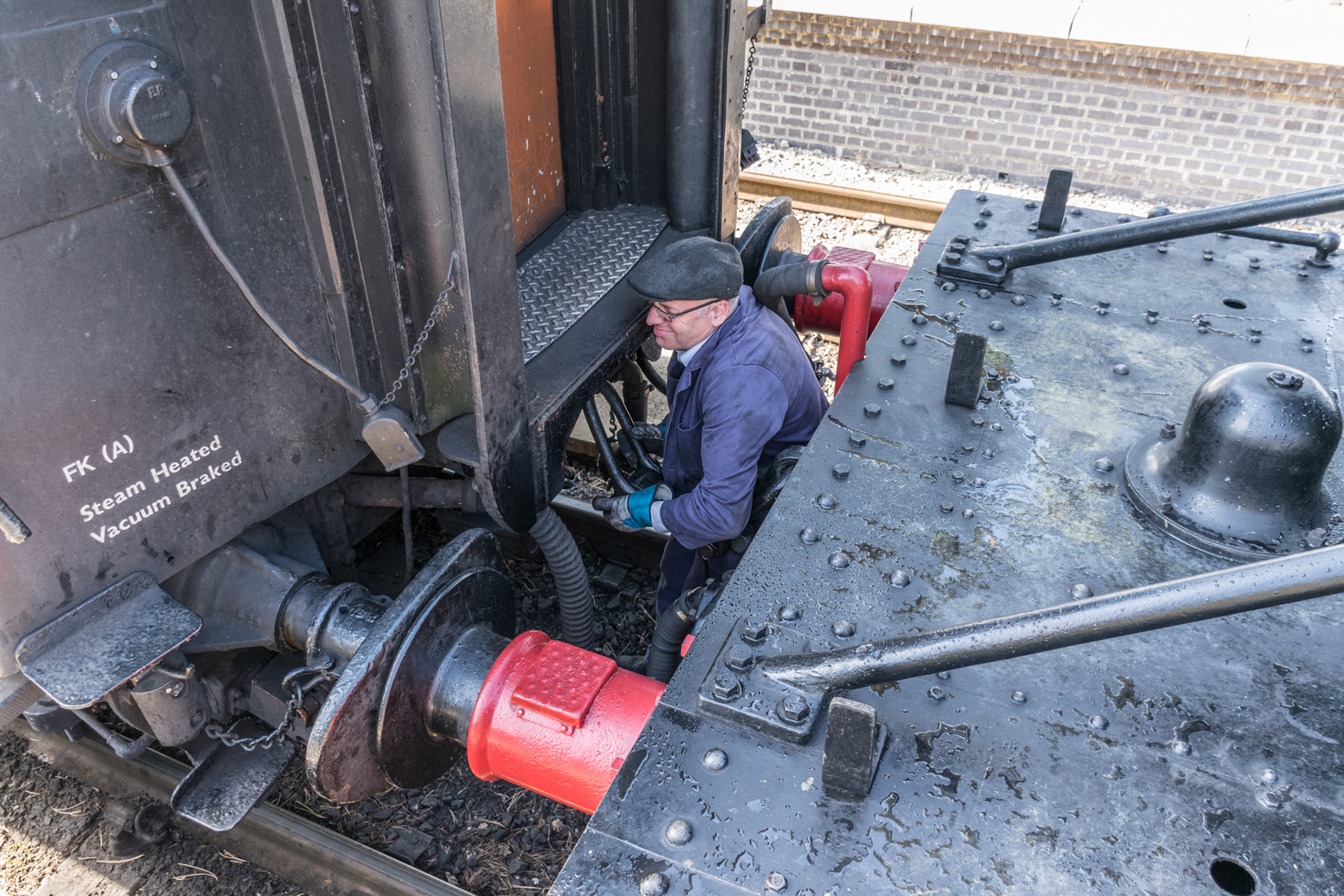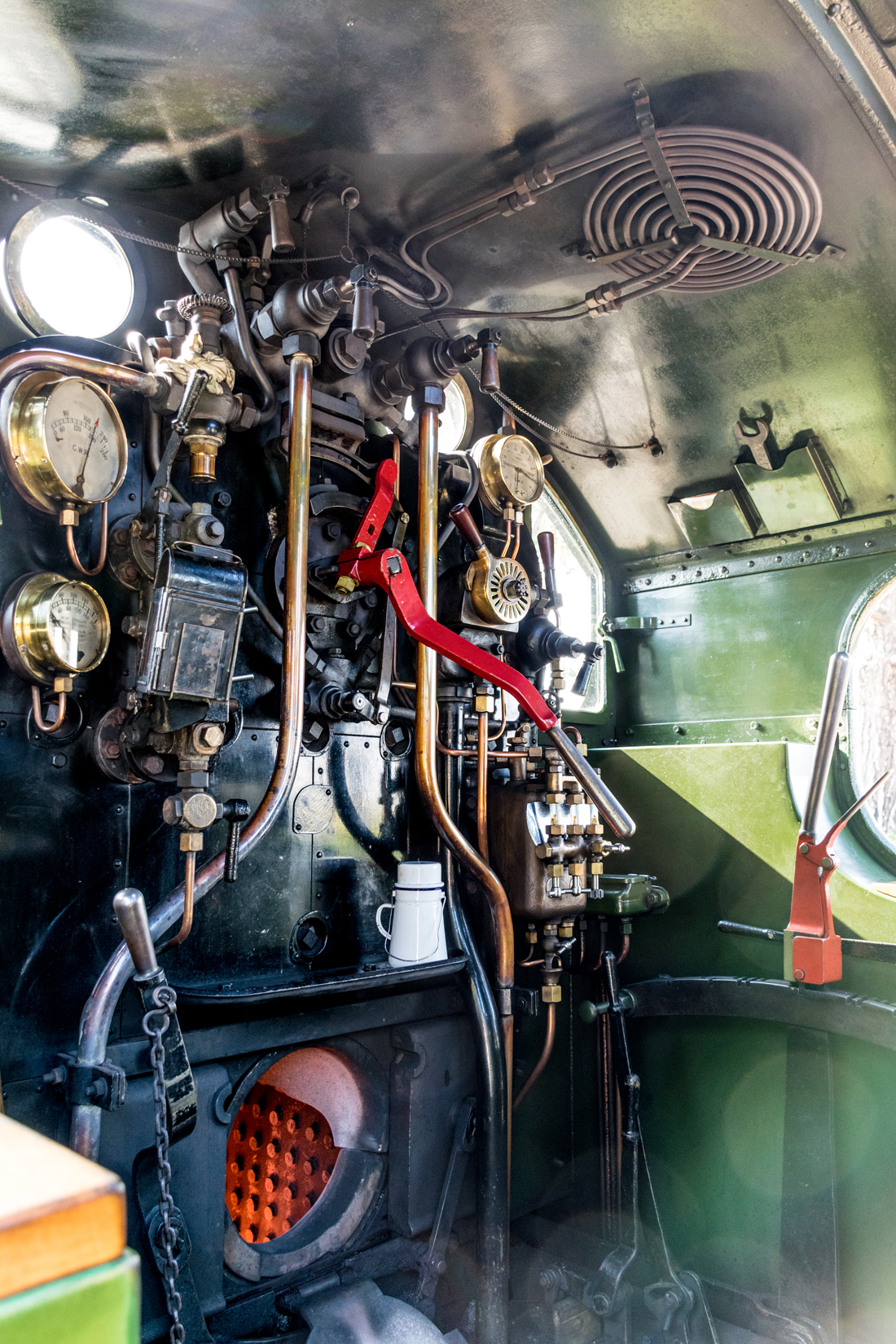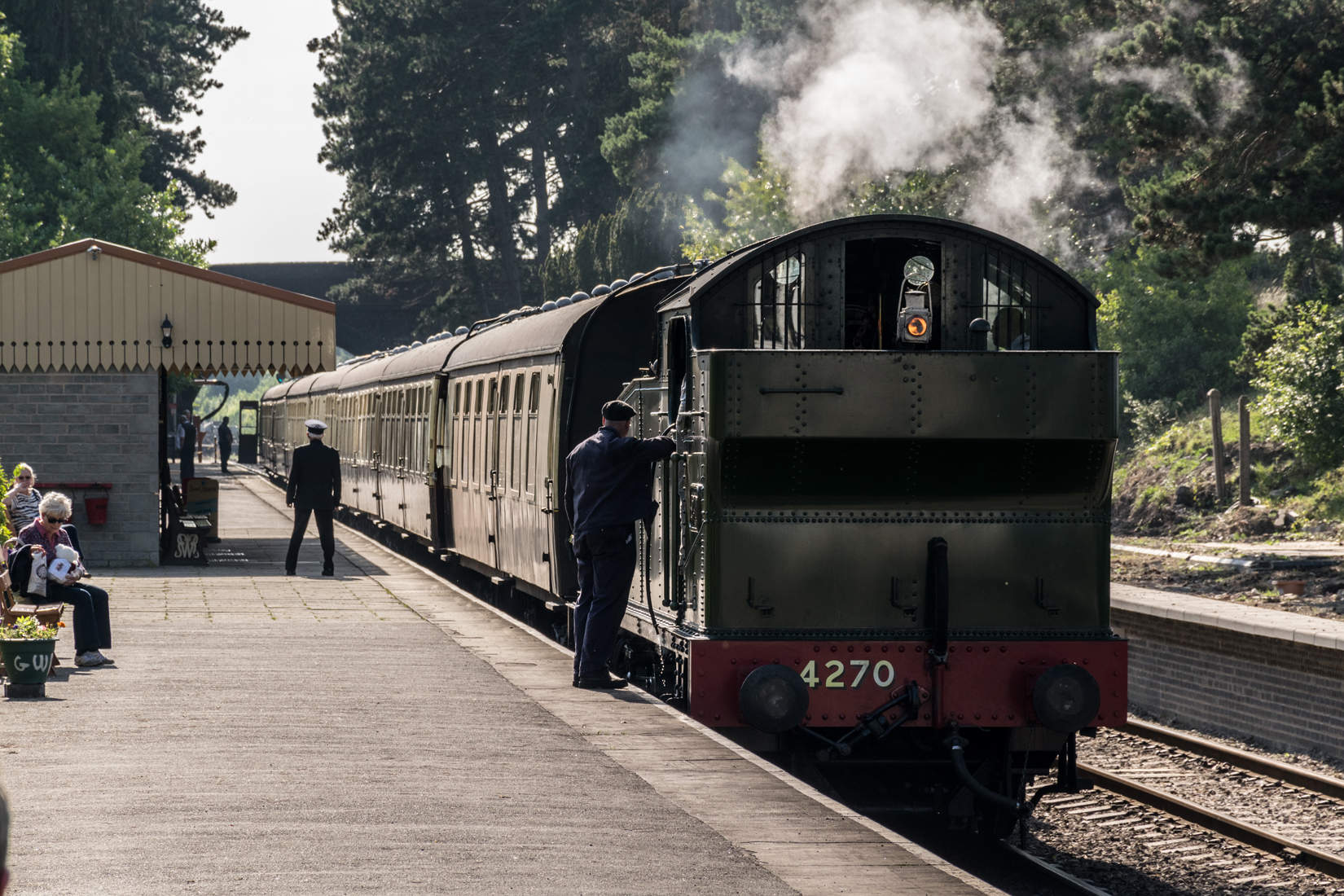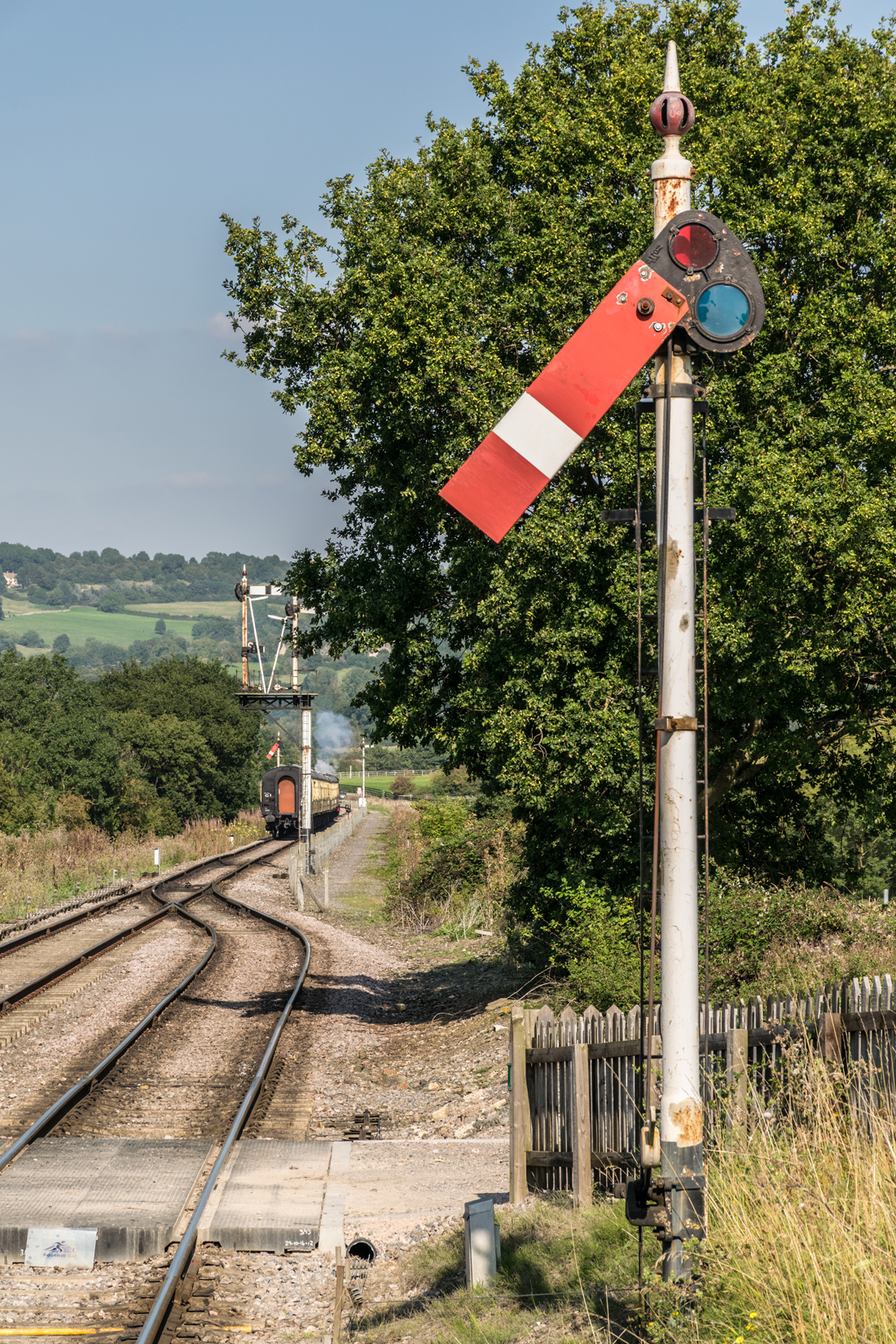Gloucestershire and Warwickshire Railway, The Honeybourne Line
10th September 2015
The Gloucestershire Warwickshire Railway runs along a part of the former Great Western Railway's mainline from Birmingham to Cheltenham, via Stratford-upon-Avon.
The line was primarily built (1900-1906) to improve through services from Birmingham to Bristol and the West Country. It also carried fruit from the highly productive farming areas both in the Cotswolds and the Vale of Evesham . . .
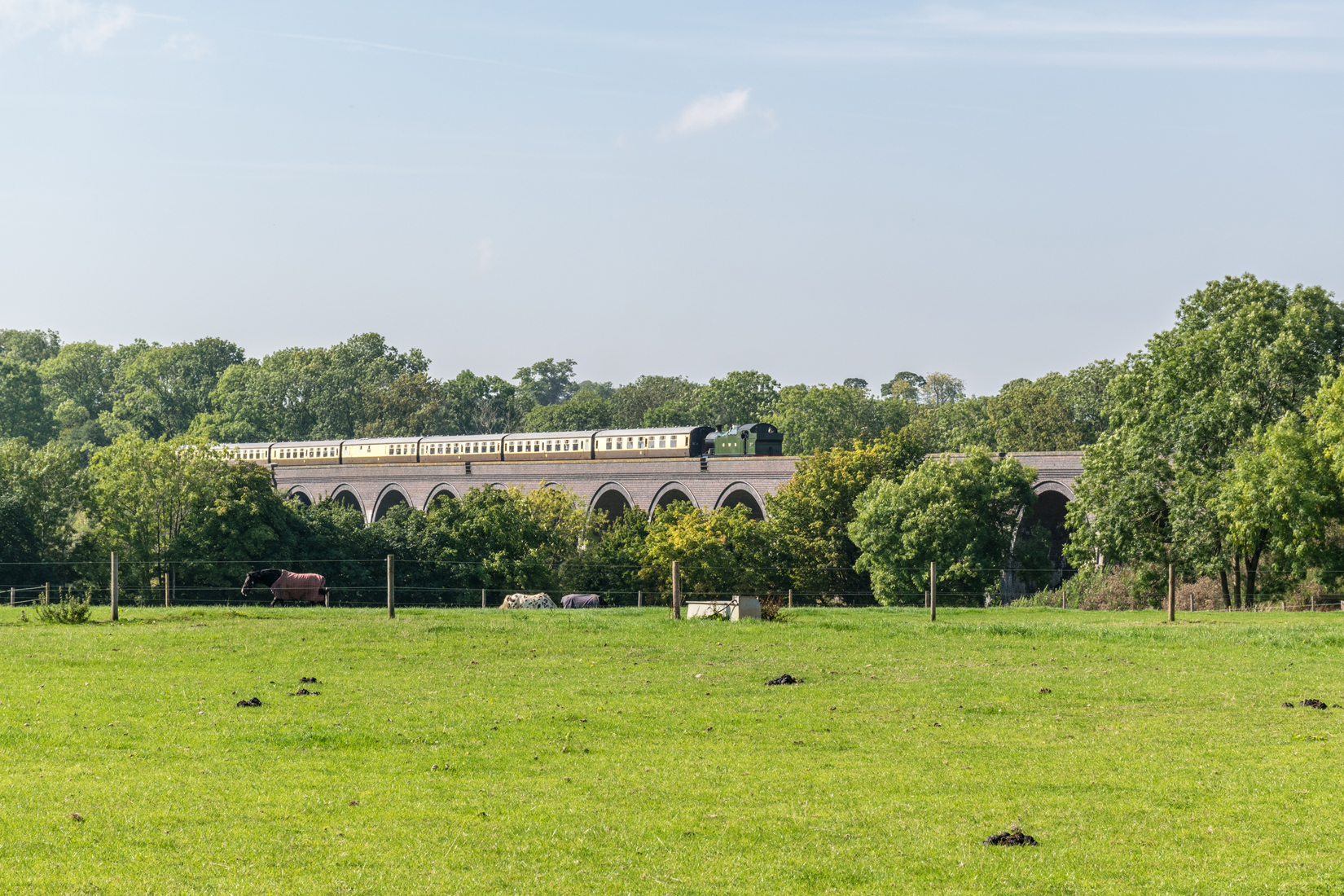
42xx class, 4270 crossing Stanway viaduct.
The Gloucestershire Warwickshire Railway runs along a part of the former Great Western Railway's mainline from Birmingham to Cheltenham, via Stratford-upon-Avon.
The line was primarily built (1900-1906) to improve through services from Birmingham to Bristol and the West Country. It also carried fruit from the highly productive farming areas both in the Cotswolds and the Vale of Evesham . . .
Early work by a Society primarily aimed at trying to keep the line open, the Gloucestershire Warwickshire Steam Railway (GWSR) was formed in 1981 with the aim of one day restoring this line from Stratford Race Course to Cheltenham Racecourse back to its former glory.
Following purchase of the track bed from Broadway to Cheltenham Race Course, the GWSR established our operating base at Toddington and started re-construction.
By 1984 work had advanced sufficiently to allow the first public train to operate over a ¼ mile of track, and on Sunday 22nd April, Nicholas Ridley MP, the Secretary of State for Transport cut the ribbon to mark the Official opening.
Since then the GWSR have restored 10 miles of track from Toddington to Cheltenham Race Course as well as recreating Winchcombe. Their latest extension to Cheltenham Race Course station was opened by HRH The Princess Royal on 7 April 2003 . . .
All this work has been completed by volunteers, using revenue generated from our operations and shareholder capital. They are a professional operating railway staffed entirely by unpaid volunteers.
The railway is owned by its shareholders, many of whom are also members of its supporting body. [source: GWSR]
